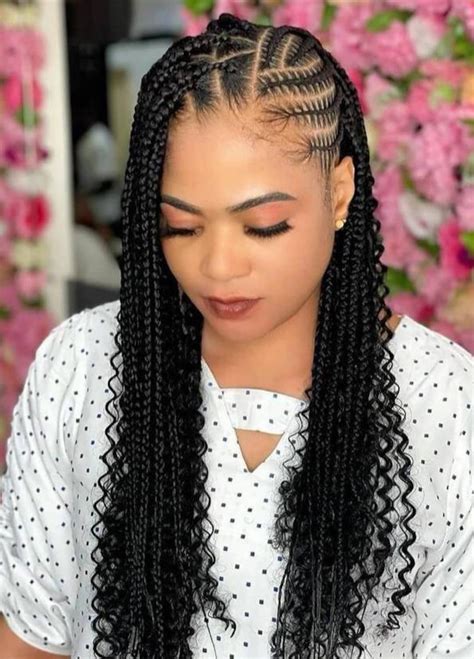Why Human Hair Braids Matter
Human hair braids have been an integral part of human culture for centuries, with historical evidence dating back to ancient civilizations. They hold deep cultural, social, and aesthetic significance across diverse regions of the world.

- Cultural Identity: Braids have served as a powerful symbol of cultural identity. Different braiding techniques and styles are often associated with specific ethnic groups and regions, preserving cultural heritage and diversity.
- Social Significance: Braids have been used to convey social status, marital status, age, and other important information within communities. They have played a crucial role in social ceremonies, rituals, and celebrations.
- Aesthetic Appeal: Human hair braids offer endless possibilities for creating stunning hairstyles. From intricate cornrows to elegant buns, braids enhance beauty, add volume, and protect hair from damage.
Benefits of Human Hair Braids
In addition to their cultural and aesthetic value, human hair braids provide numerous benefits for hair health and functionality.
- Hair Protection: Braids create a protective layer around the hair shaft, shielding it from environmental factors, breakage, and split ends.
- Reduced Tangling: By keeping hair strands separate, braids minimize tangling and matting, making hair more manageable.
- Enhanced Growth: Some types of braids, such as cornrows, can stimulate blood circulation to the scalp, potentially promoting hair growth.
- Easy Maintenance: Braids can last for several weeks, reducing the need for daily styling and wash days.
- Versatile Hairstyles: Braids offer a wide range of styling options, allowing for quick and easy changes from sleek buns to playful pigtails.
Types of Human Hair Braids
The diversity of human hair braids is vast, with countless techniques and styles available. Here are some of the most popular types:
- Box Braids: Box braids are square-shaped braids that can be created in various sizes and lengths. They are often used for protective styling and are popular among clients of African descent.
- Cornrows: Cornrows are tight, raised braids that follow the natural hairline. They can be worn in a variety of patterns and are known for their ability to reduce tension on the hair.
- French Braids: French braids involve taking three strands of hair and weaving them together in an intricate pattern. They are a classic and elegant braiding style.
- Fishtail Braids: Fishtail braids resemble a fish’s tail, with strands of hair woven together in a unique pattern. They add a touch of whimsy and complexity to any hairstyle.
- Dutch Braids: Dutch braids are similar to French braids, but the strands are woven under instead of over. This creates a raised, voluminous effect.
Applications of Human Hair Braids
Beyond their traditional uses, human hair braids are finding innovative applications in various fields:
- Fashion: Braids have become a prominent trend in fashion, inspiring designers and hairstylists to create bold and unique looks.
- Medical: Braids have been used in scalp therapy to promote hair growth and alleviate conditions such as traction alopecia.
- Artistic Expression: Braids serve as a canvas for creativity, with artists creating elaborate hair sculptures and installations.
- Braidology: Braidology is an emerging field that explores the history, cultural significance, and scientific aspects of braiding, fostering research and innovation.
Tips and Tricks for Braiding
- Start with well-hydrated hair.
- Use hair products specifically designed for braiding.
- Divide hair into sections for easier management.
- Practice makes perfect. Don’t be discouraged if you don’t master a technique immediately.
- Use hairpins to secure loose ends and prevent unraveling.
- Protect braids with a satin bonnet or scarf while sleeping.
- Avoid using excessive tension when braiding, as this can cause hair breakage.
- Take breaks periodically to avoid muscle fatigue.
How to Braid Human Hair Step-by-Step
Box Braids:
- Divide hair into small square sections.
- Take three strands from one section and cross the left strand over the middle strand.
- Cross the right strand over the new middle strand.
- Continue the pattern until you reach the desired length.
- Repeat for all sections.
Cornrows:
- Section off hair along the hairline.
- Take three strands from the front of the section and cross the left strand under the middle strand.
- Pick up a small section of hair from the side and add it to the left strand.
- Cross the left strand over the new middle strand.
- Repeat steps 3-4 until you reach the desired length.
- Secure the braid at the end with an elastic band.
French Braids:
- Divide hair into three equal sections.
- Cross the right section over the middle section.
- Take a small section of hair from the left side and add it to the right section.
- Cross the right section over the new middle section.
- Repeat steps 3-4, alternating sides, until you reach the desired length.
- Secure the braid at the end with an elastic band.
Fishtail Braids:
- Divide hair into two equal sections.
- Take a small strand from the outer edge of the left section and cross it over to the inner edge of the right section.
- Take a small strand from the outer edge of the right section and cross it over to the inner edge of the left section.
- Repeat steps 2-3 until you reach the desired length.
- Secure the braid at the end with an elastic band.
Conclusion
Human hair braids are a vibrant and integral part of human culture, embodying cultural heritage, aesthetic beauty, and hair health benefits. With the advent of innovative techniques and emerging applications, braids continue to captivate and inspire. Embrace the artistry and versatility of human hair braids to unlock a world of boundless creativity and empower your personal expression.
